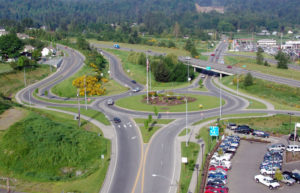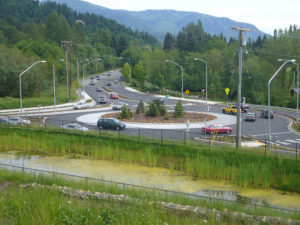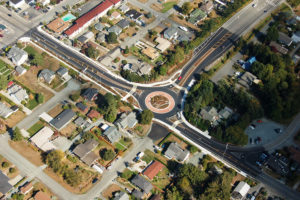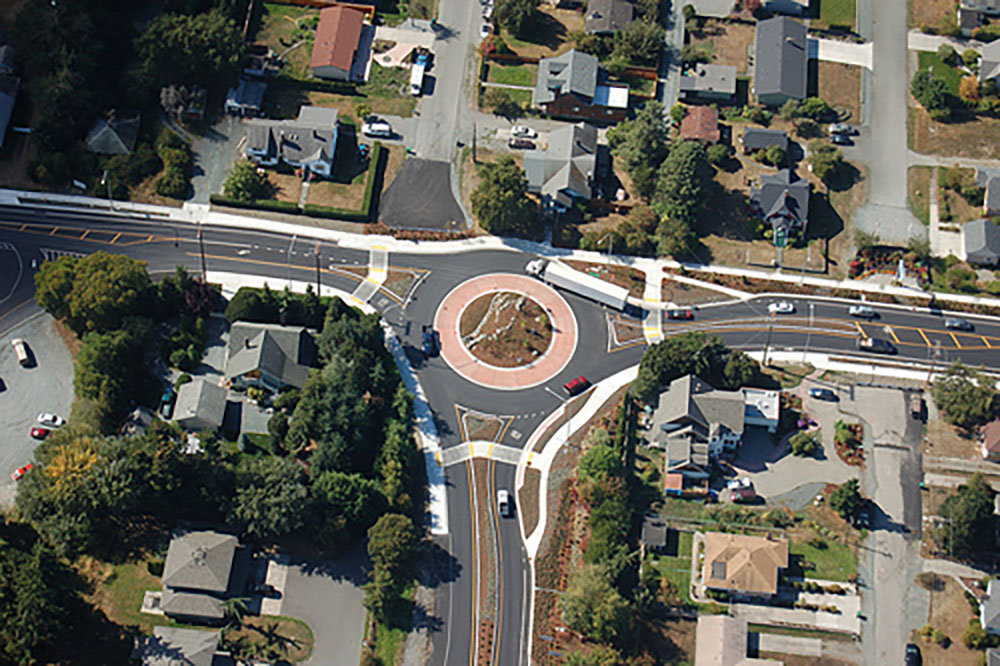A Vision Becomes Reality
The Reid Middleton transportation practice roots date back to 1983 when Paul Masten joined Reid Middleton. Paul had relocated from Chicago with the vision of leading a civil engineering practice in the Northwest, having an emphasis on traffic and transportation. Early in his Reid Middleton career, Paul was successful in fulfilling this goal, first landing a significant corridor project for WSDOT that led to two large-scale design reports for WSDOT. These projects paved the way to building a transportation focus at Reid Middleton.
During the early stages of these projects, a number of engineers were hired. Joining Reid Middleton late in 1990, I was assigned as a project engineer for a five-mile segment on SR 9 near Woodinville. Growth and development was in full swing during this time, and increased demand was driving the need for additional roadway capacity. One of the first tasks was to prepare a traffic study to evaluate intersection level of service using Transyt7 software. Unfortunately, my rudimentary Lotus 123 skills did not translate to the DOS laden Transyt7. Luckily, we had just hired Patrick McGrady, a recent UW graduate with a military background and a can-do attitude. Patrick “volunteered” and was successful in the assembling the traffic model.

Fast-forward to the mid-1990s when we formed a separate Surface Transportation group, led by Bill Goodwin. At that time, we were working on the interchange at Tester Road and SR 522 in Monroe. This key junction needed additional capacity to serve an adjacent high school, the main route into town and SR 522. During a working lunch, Bill held a brainstorming session to develop outside-the-box alternatives to improve the capacity of the interchange without impacting an adjacent bridge (a significant cost component and potential project budget buster). From this session, a concept was floated to WSDOT engineers for vetting.
A Roundabout is Born
The initial WSDOT response was skepticism. However, with time, discussion and more research, WSDOT became more receptive to the idea of installing a roundabout in lieu of more lanes to improve the capacity and safety of the intersection. By maintaining the existing lane count, the bridge supporting SR 522 could remain, saving millions of dollars. After the design, our staff served on the WSDOT committee to prepare their first Design Manual Roundabout Chapter. With set guidelines, WSDOT could then move forward with a standard review/approval process for the roundabouts within their right-of-way. The rest is history.
Growth Fueled by Passion
Today, our dedicated team thoroughly enjoys the many challenges associated with roundabouts, and this thirst has helped to grow our roundabout practice into a nationally recognized force. Our roundabout team leader, Kelli Owen, has facilitated the completion of over 30 built roundabouts, with engineering by Rachel Price and analysis by Patrick McGrady. This team has been instrumental in building our expertise with their involvement with the ITE National Roundabout Task Force. They have also provided roundabout instruction and training for over 800 students throughout the Northwest. With our roundabout resume now exceeding 100 intersections where we have provided input, our team can efficiently evaluate potential solutions at the most challenging locations.
With the gaining popularity of roundabouts, more and more agencies are becoming receptive to this form of intersection treatment. With more properly designed roundabouts, more education of their numerous safety benefits and ability to provide a gateway feature, we are seeing funding dollars shift from adding more lanes to improving capacity and safety of intersections. This mindset bodes well for future of our transportation world.
Celebrating the Past, Building the Future

Today, almost every project is multimodal and considers energy consumption, with a big focus on being bike-friendly; which really wasn’t on the radar back when I first started designing roadways. Roundabouts achieve both of these goals; working well for pedestrians and cyclists. Roundabouts reduce idle times, emissions, and greenhouse gases. In our view, this transportation design will result in a safer and more sustainable solution for tomorrow.



